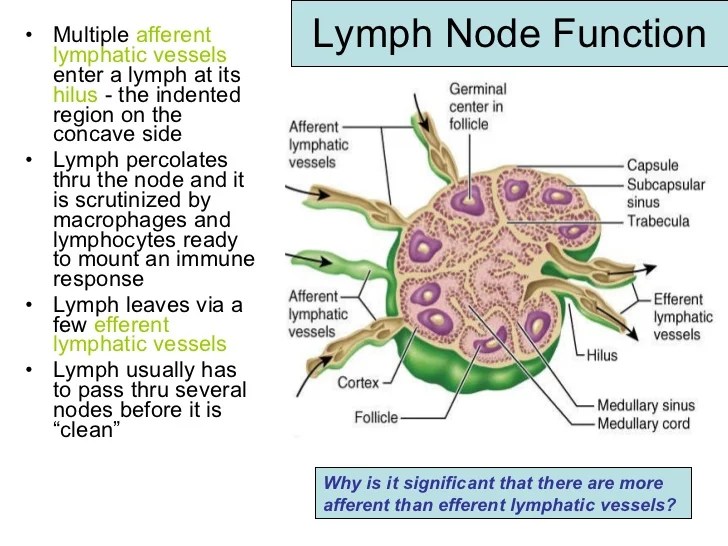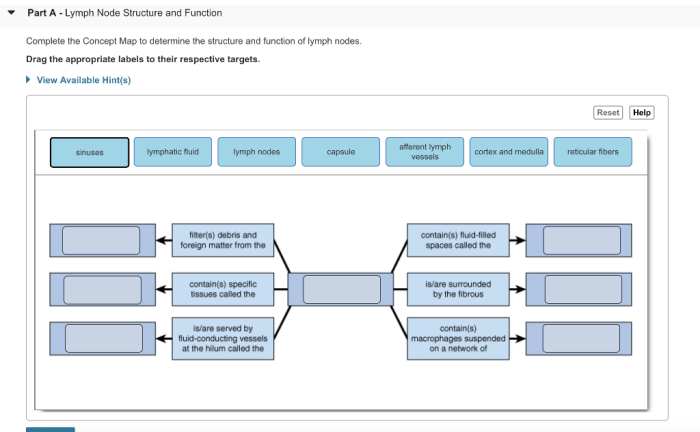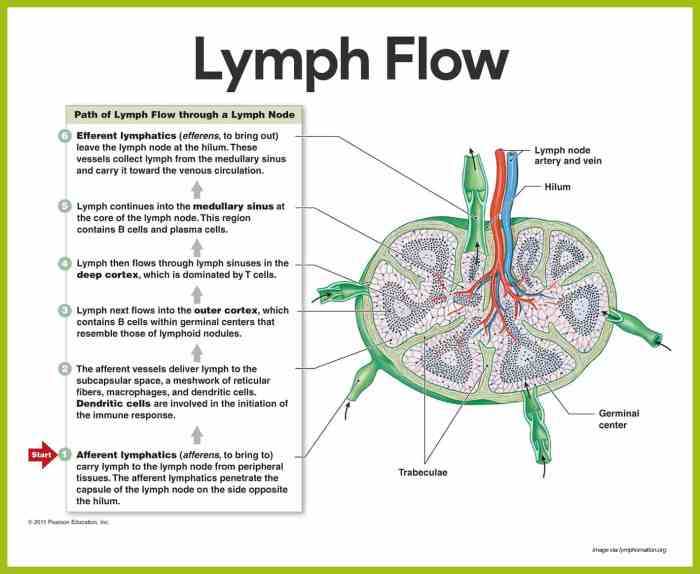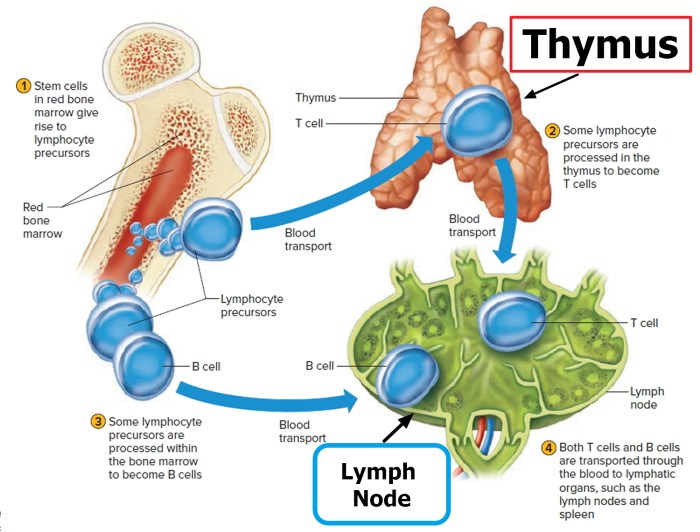Concept map lymph node and spleen structure and function – Embark on a journey into the fascinating realm of immunology with our comprehensive concept map exploring the intricate structure and vital functions of lymph nodes and the spleen. These remarkable organs play a pivotal role in safeguarding our bodies against a relentless onslaught of pathogens, foreign particles, and damaged cells.
Join us as we delve into their remarkable architecture and unravel the intricate mechanisms that enable them to maintain our health and well-being.
Lymph Nodes and the Spleen: Structure and Function: Concept Map Lymph Node And Spleen Structure And Function

The lymphatic system is a network of vessels, tissues, and organs that plays a crucial role in the body’s immune defense. Lymph nodes and the spleen are key components of this system, serving as filters and monitors of bodily fluids.
Structure of Lymph Nodes, Concept map lymph node and spleen structure and function
Lymph nodes are small, bean-shaped structures located throughout the body. Each lymph node has a:
- Cortex:Outer region containing follicles of B lymphocytes
- Paracortex:Middle region containing T lymphocytes
- Medulla:Inner region containing sinuses and macrophages
- Hilum:Entry and exit point for lymphatic vessels
Diagram of a lymph node:
[Diagram dengan label untuk korteks, parakortex, medula, dan hilum]
Function of Lymph Nodes
- Filter and monitor lymph fluid for pathogens and foreign particles
- Trap and destroy pathogens and foreign particles using macrophages and lymphocytes
- Activate lymphocytes to initiate an immune response
Structure of the Spleen
The spleen is a large, fist-sized organ located in the upper left abdomen. It has:
- Capsule:Outermost layer
- Trabeculae:Connective tissue strands supporting the spleen
- Red pulp:Contains red blood cells and macrophages
- White pulp:Contains lymphoid tissue with B and T lymphocytes
Diagram of the spleen:
[Diagram dengan label untuk kapsul, trabekula, pulpa merah, dan pulpa putih]
Function of the Spleen
- Filter and monitor blood for pathogens and foreign particles
- Remove old and damaged red blood cells
- Produce antibodies and activate lymphocytes for immune response
Comparison of Lymph Nodes and the Spleen
Similarities:
- Both are part of the lymphatic system
- Both filter and monitor bodily fluids
- Both contain lymphoid tissue for immune response
Differences:
- Lymph nodes are small and located throughout the body, while the spleen is large and located in the abdomen
- Lymph nodes primarily filter lymph fluid, while the spleen primarily filters blood
- Lymph nodes are involved in the early stages of the immune response, while the spleen is involved in both early and late stages
Table comparing key features:
[Tabel dengan kolom untuk Lymph Nodes dan Spleen, serta baris untuk Lokasi, Fungsi Utama, dan Peran dalam Respon Imun]
Clinical Significance
Abnormalities in lymph nodes or the spleen can indicate underlying health conditions:
- Enlarged lymph nodes: Infection, cancer
- Splenomegaly (enlarged spleen): Liver disease, blood disorders
Lymph node biopsy and splenectomy are diagnostic and treatment procedures:
- Lymph node biopsy: Removes a lymph node for examination
- Splenectomy: Removal of the spleen
FAQ Section
What is the primary function of lymph nodes?
Lymph nodes act as filters, trapping and destroying pathogens, foreign particles, and damaged cells present in the lymph fluid.
How does the spleen contribute to the immune response?
The spleen plays a crucial role in producing antibodies and activating lymphocytes, essential components of the immune system’s defense mechanisms.
What is the significance of lymph node biopsy?
Lymph node biopsy involves examining a sample of lymph node tissue to diagnose underlying health conditions, such as infections, cancers, or immune disorders.


